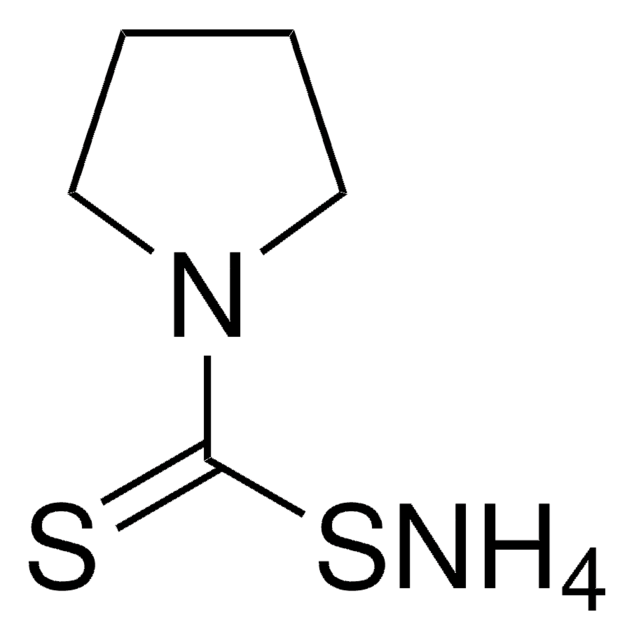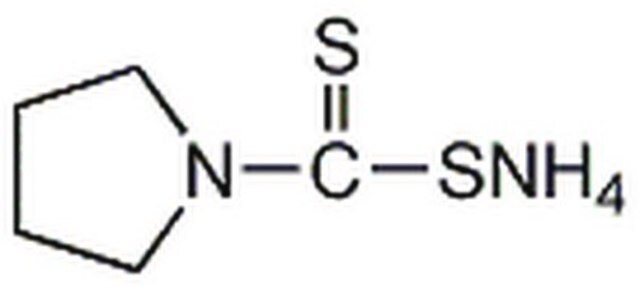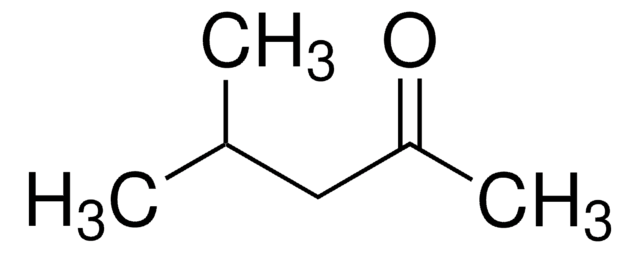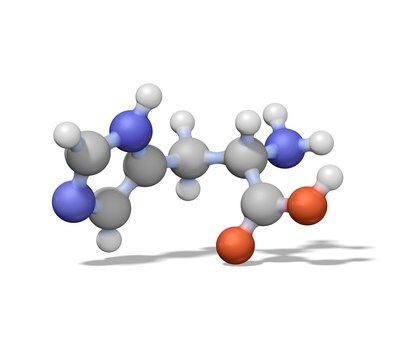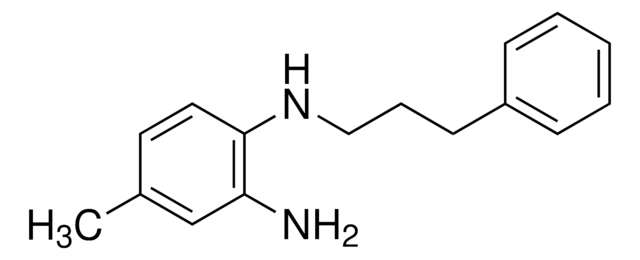Wichtige Dokumente
P8765
Ammonium-pyrrolidindithiocarbamat
~99%
Synonym(e):
APDC, Ammoniumtetramethylendithiocarbamat, PDC, PDTC, Pyrrolidin-1-dithiocarbonsäure Ammoniumsalz
About This Item
Empfohlene Produkte
Biologische Quelle
microbial
Assay
~99%
Form
(powderor powder with lumps)
mp (Schmelzpunkt)
153-155 °C (lit.)
Löslichkeit
water: 50 mg/mL, clear to very slightly hazy, colorless to faintly yellow
Lagertemp.
2-8°C
SMILES String
N.SC(=S)N1CCCC1
InChI
1S/C5H9NS2.H3N/c7-5(8)6-3-1-2-4-6;/h1-4H2,(H,7,8);1H3
InChIKey
MDDIUTVUBYEEEM-UHFFFAOYSA-N
Angaben zum Gen
human ... NOS1(4842) , NOS2(4843) , NOS2B(201288) , NOS2C(645740) , NOS3(4846) , RELA(5970)
Suchen Sie nach ähnlichen Produkten? Aufrufen Leitfaden zum Produktvergleich
Allgemeine Beschreibung
Anwendung
- to inhibit nuclear factor κB (NF-κB) mobilization and TNF (tumor necrosis factor) production in human monocytes
- to reduce neutrophil activity in rats
- to prevent Ca2+ influx in adriamycin (ADR)-treated podocytes
to abrogate the microRNA-146a promoter luciferase reporter activity in human brain cells
Biochem./physiol. Wirkung
Lagerklassenschlüssel
11 - Combustible Solids
WGK
WGK 3
Flammpunkt (°F)
Not applicable
Flammpunkt (°C)
Not applicable
Persönliche Schutzausrüstung
dust mask type N95 (US), Eyeshields, Gloves
Hier finden Sie alle aktuellen Versionen:
Besitzen Sie dieses Produkt bereits?
In der Dokumentenbibliothek finden Sie die Dokumentation zu den Produkten, die Sie kürzlich erworben haben.
Kunden haben sich ebenfalls angesehen
Unser Team von Wissenschaftlern verfügt über Erfahrung in allen Forschungsbereichen einschließlich Life Science, Materialwissenschaften, chemischer Synthese, Chromatographie, Analytik und vielen mehr..
Setzen Sie sich mit dem technischen Dienst in Verbindung.